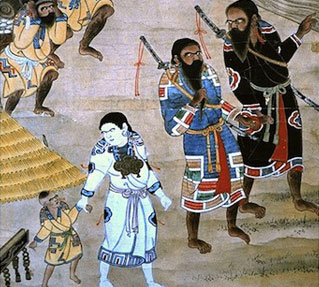Pages |
When answering telephone calls too, people tend to raise their speech pitch register. A recent survey shows, however, that the pitch of "the voice" has come down quite a bit and that differences in pitch register have been leveling out.
As a speaker of Japanese one has a choice of speaking more like a man or a woman; the choice is the speaker's. Depending on what choices are made, the speaker can actively assert certain images of himself or herself, accept the speaker's masculinity or femininity, or question gender-typing that comes from using gender-differentiated language.
Coarse language or "talking tough"
Another dimension of language use that is probably highly correlated to masculine and feminine language is the continuum of coarse and refined. A skillful speaker of language can choose to be more coarse or more refined depending on what situation he/she is placed in. Again the speaker has a choice to make and this choice can contribute to the color of linguistic act. The above mentioned meshi 'cooked rice, meal' belongs to coarse, as does kū 'eat', temē 'you', etc.
Coarse language is not limited to just vocabulary selection. Other features include louder delivery, shorter language forms (ike! vs. itte kudasai 'go!'), certain unsavory or slangy vocabulary items and phrases (suke 'girlfriend', yasa 'residence'), word formation involving clipping (musho/keimusho 'jail', yaku )
Pages |











